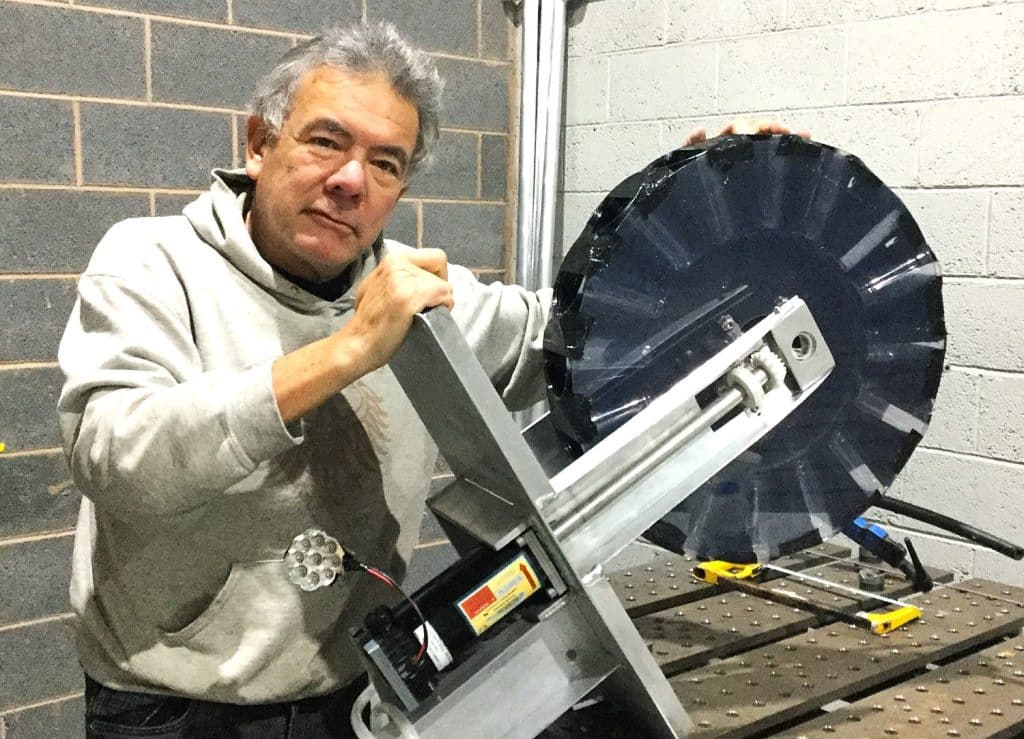A North Wales-based company is set to unveil a potentially game-changing carbon capture technology, with the backing of Bangor University, which could play a vital role in global efforts to combat climate change. Robert Lim Inventions Ltd, based in Deeside, is advancing its late founder’s patented enclosed engine system, designed to capture carbon dioxide while simultaneously generating electricity, offering a more cost-effective solution to carbon capture on an international scale.
James Sheridan, the company’s director, is leading the project, which has gained significant support from Bangor University. The development is bolstered by a £10,000 Skills Innovation Voucher (SIV), funded through the UK Government’s Shared Prosperity Fund. The scheme allows businesses in Gwynedd, Anglesey, and Flintshire to collaborate with academic institutions to innovate and grow.
Robert Lim Inventions has partnered with Professor Michael Rushton and his team at the Nuclear Futures Institute, who are now rigorously testing a key component of the carbon capture process. Sheridan is determined to honour the vision of Robert Lim, who sadly passed away last year, by bringing the technology to market and cementing his legacy.
“Robert designed and built a prototype of this enclosed engine system, which captures carbon dioxide while generating electricity,” Sheridan explained. “It offers a more affordable process, and if we can prove the concept, it could be the missing link in enabling widespread adoption of carbon capture technology needed to tackle climate change.”
Sheridan emphasised the urgency of addressing the growing environmental threat posed by increasing levels of carbon dioxide in the atmosphere. “Governments and local authorities are striving to meet clean growth and de-carbonisation targets. Our technology could be one of the key solutions to support these efforts,” he said.
The innovative system is powered by a renewable energy source. It uses bellows to push air into a liquid-filled tank, which turns paddles to generate electricity stored in an adjacent battery. Simultaneously, carbon dioxide (CO2) is captured in the liquid. A chemical process, currently using Monoethanolamine, then traps the CO2, allowing clean air to be released back into the atmosphere. When the liquid becomes saturated with CO2, a heating filament activates, releasing the CO2 into a secondary storage tank, ready for industrial use or sequestration.
The company is now seeking up to £250,000 in seed funding to create scaled prototypes, perform proof-of-concept trials, and conduct validation testing. Sheridan is optimistic about the future. “With Bangor University’s support, we are making significant strides. Robert’s dream is becoming a reality, and we’re grateful to Professor Rushton and his team for helping us make it happen.”
Bangor University’s Business Development Manager, Nicola Sturrs, praised the project as an example of how academic collaboration can drive innovation. “This system has the potential to make a major impact in the race to net zero. We wish James and his team the best of luck, and we’re pleased to see the SIV scheme helping them achieve their goals,” she said.
The SIV project is funded by the UK Government’s Shared Prosperity Fund, managed by local councils in Gwynedd, Anglesey, and Flintshire. The initiative provides businesses with vouchers that can be used for research, development, consultancy, and more, helping local companies bring pioneering ideas to life.




